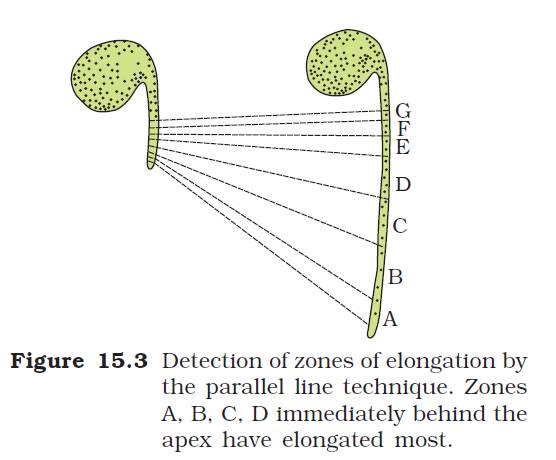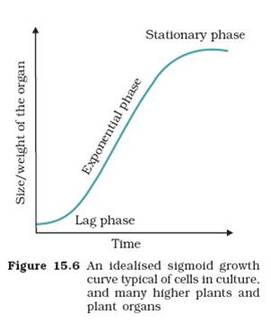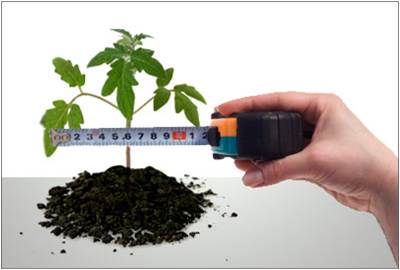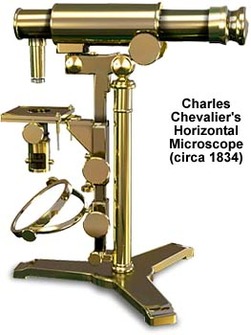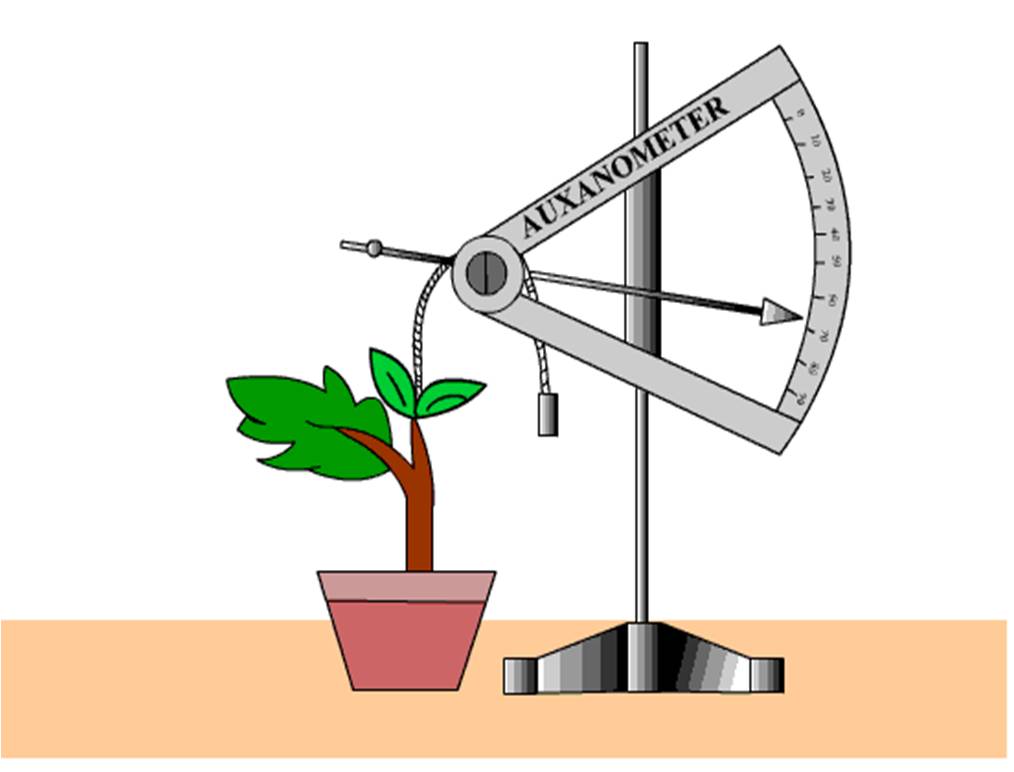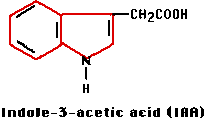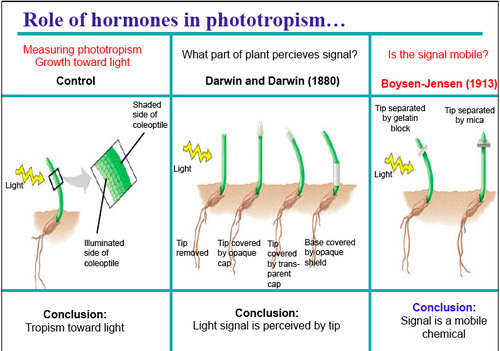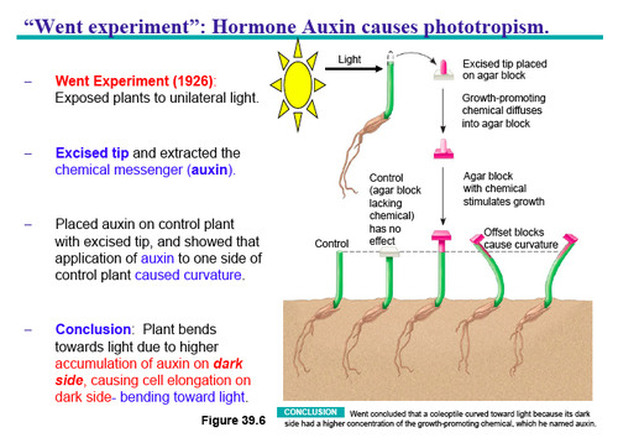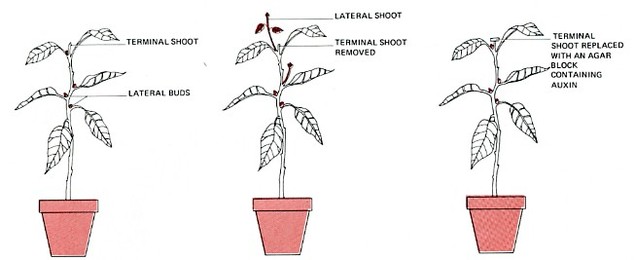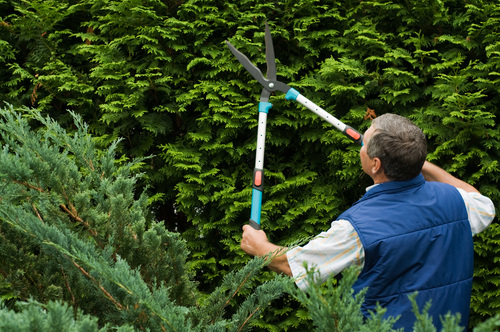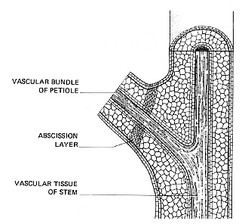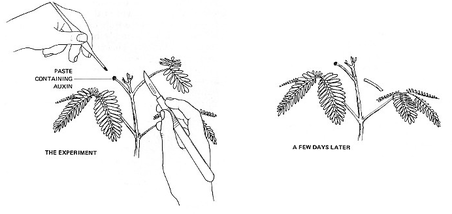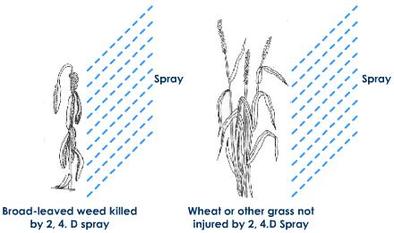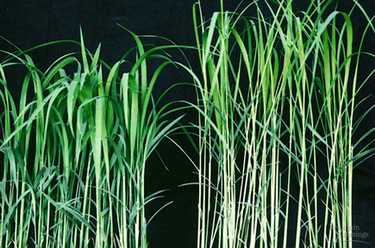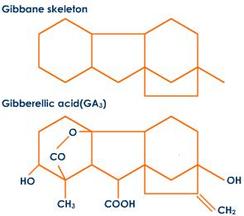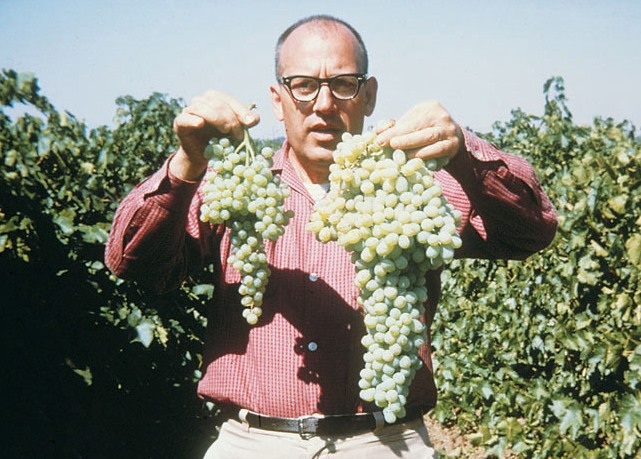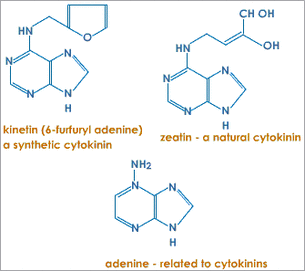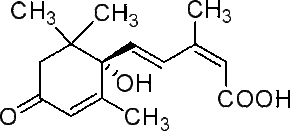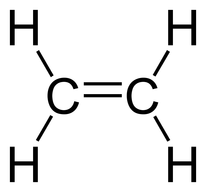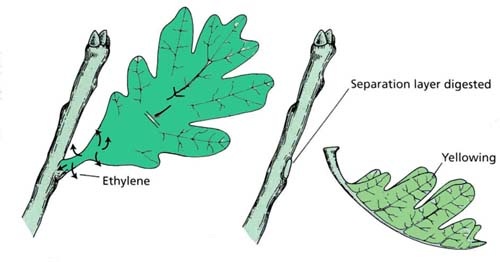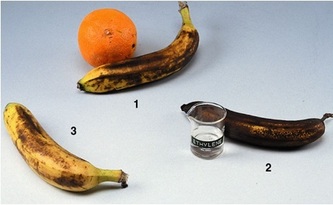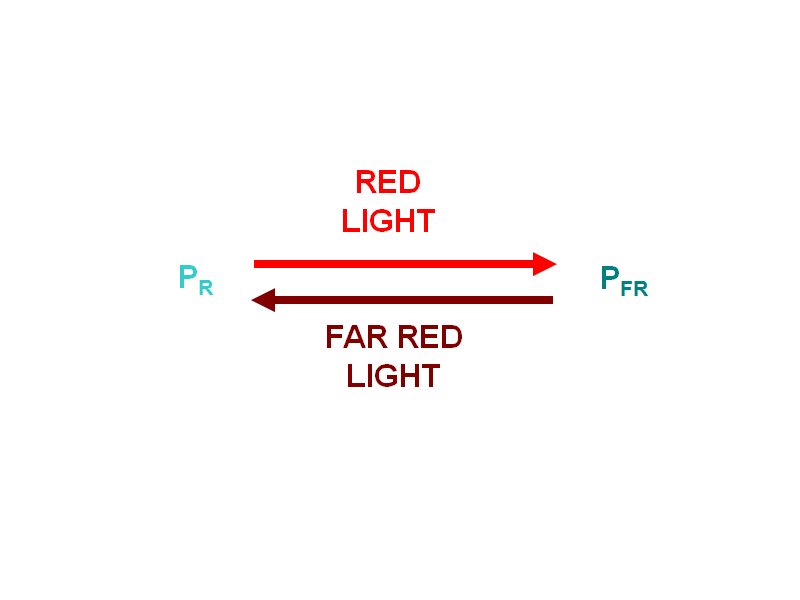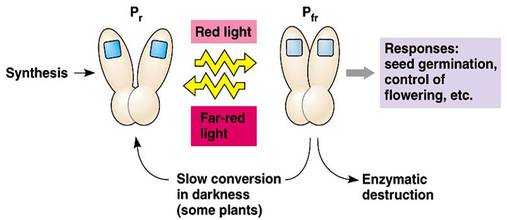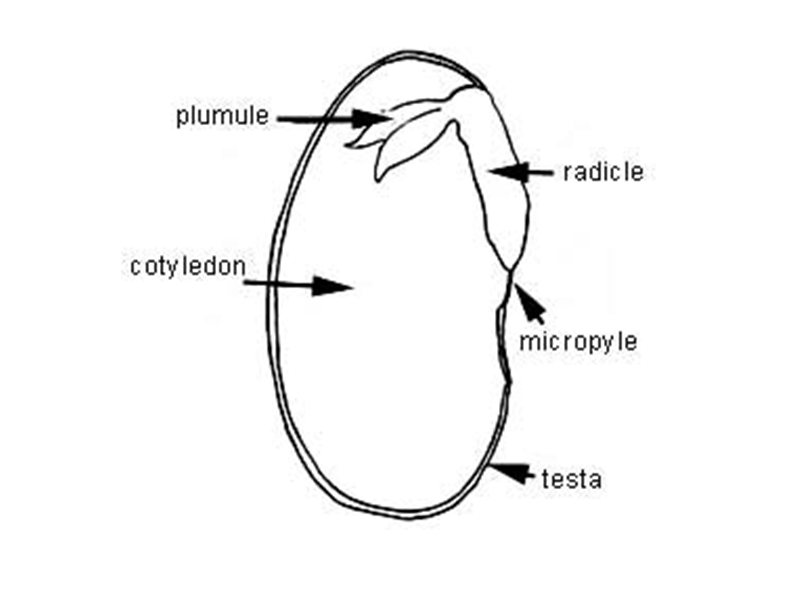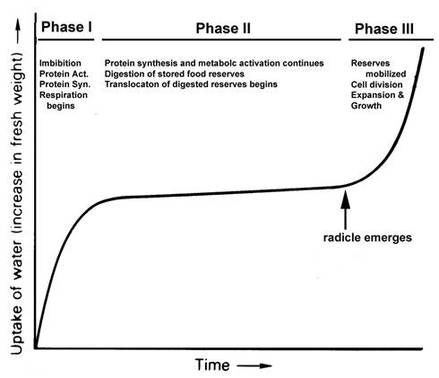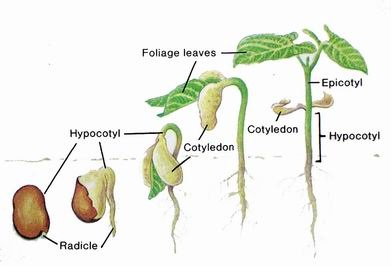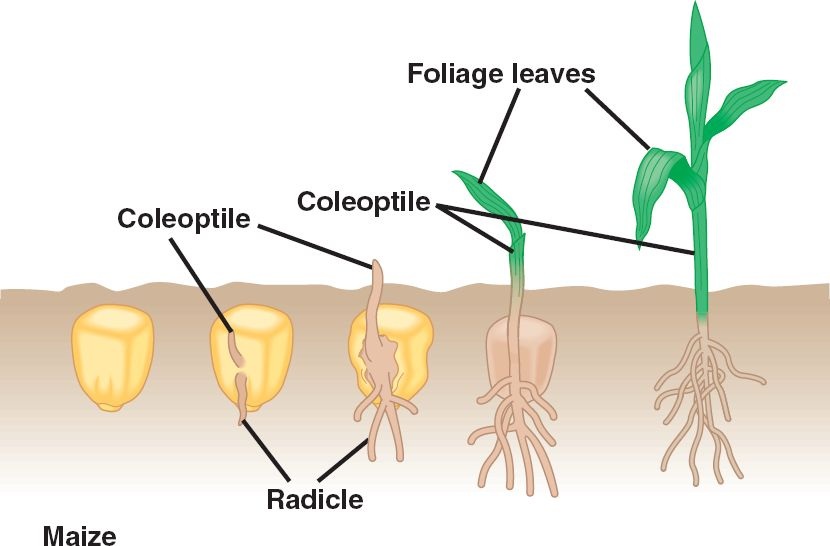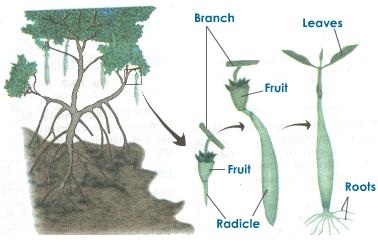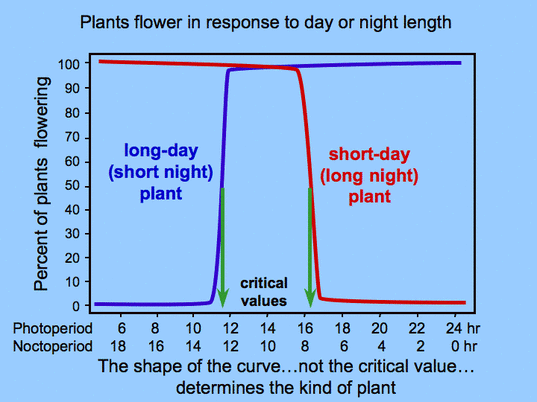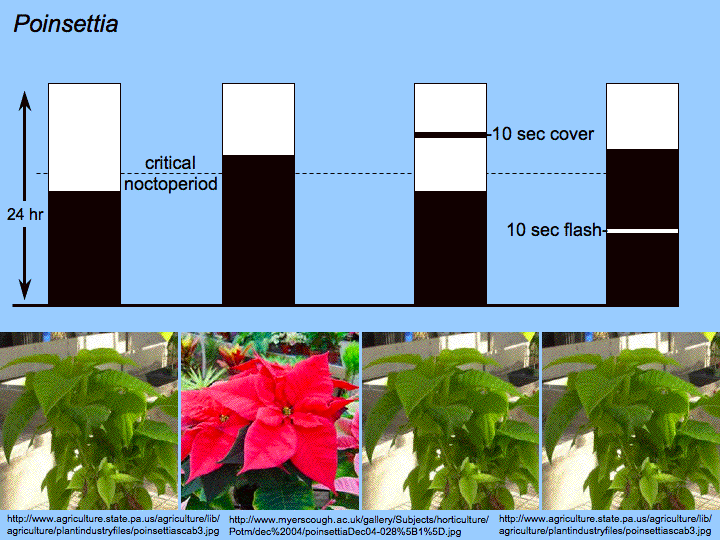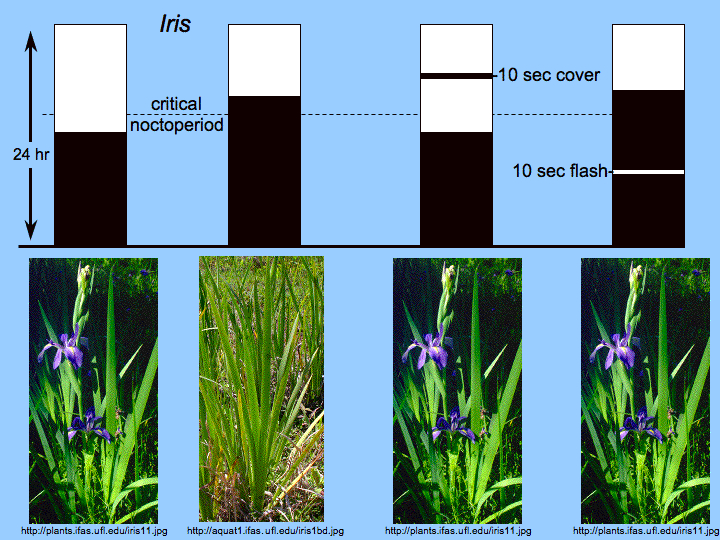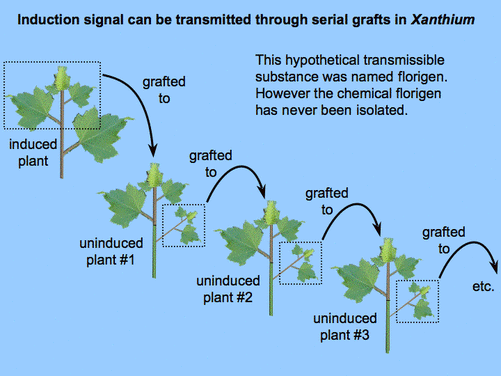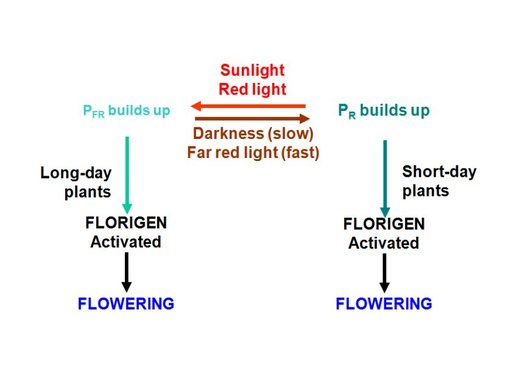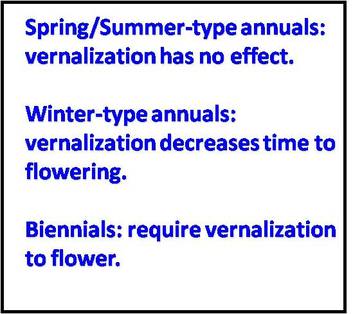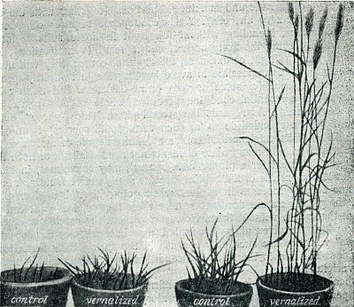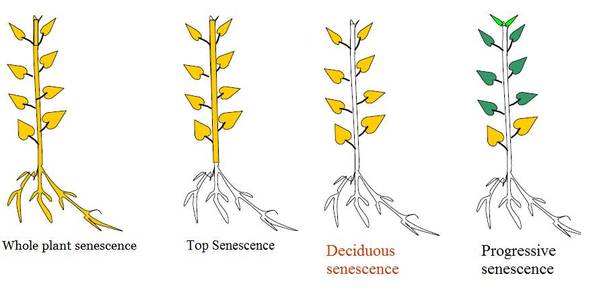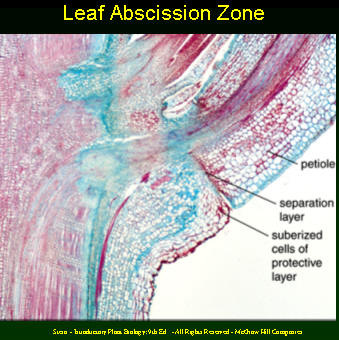ISC 12>CONTENT>STRUCTURE AND FUNCTION OF PLANTS>7. PLANT GROWTH & DEVELOPMENT
|
Scope of syllabus
|
|
PLANT GROWTH
INTRODUCTION
- Growth is one of the most fundamental and conspicuous characteristics of living organisms.
- Growth may be defined as an irreversible increase in mass, weight and size of a living organisms.
- In most cases, it results in increase in dry weight and the amount of protoplasm. Growth in higher plants includes cell division, enlargement and differentiation. Increase in the number and size of cells by itself cannot account for the development of an organized plant. For example, when a seed is sown, it does not become a larger seed but it grows as a seedling. Thus, growth is always accompanied by differentiation. Differentiation is the transformation of identical cells into different tissues.
- Depending upon the various structural, functional and physiological needs of the plant the tissues are of different types.
- Growth and differentiation results in development, which leads to gross form of the plant.
- Meristematic cells present in the plant body viz., root, shoot apices, and the cambium are responsible for growth in plants.
PHASES OF GROWTH
|
|
MEASUREMENT OF GROWTH
Growth in plants can be measured by
- Increase in the number of cells produced.
- Increase in the length or girth of a shoot or root.
- Increase in dry weight of an organ.
- Increase in the area of a leaf.
- Increase in the volume of fruit
Methods of measurement
|
2. By horizontal microscope
|
|
3. By Auxanometer :
|
FACTORS AFFECTING GROWTH
External factors
- Temperature : Growth increases with increases in temperature until it reaches a maximum at optimum temperature.The rate of growth decrease with further increases in temperature.The growth of a species is typically adapted to its natural temperature environment.
- Light: Light affects growth depending on its intensity, quality and periodicity.
- Soil water treatment : Since growth depends on hydrostatic pressure, water deficiency will retard or completely stop.
- Pollutants : Air pollutants like ethylene, sulphur dioxides, fluorides etc. Widespread use of pesticides, herbicides, fungicides etc. has a harmful effect on plant growth.
- Nutrients
- Genetic factor
- Growth regulators
GROWTH REGULATORS
- Unlike animals, plants can manufacture all the chemical substances they need for survival, given only light, water, carbon dioxide and trace elements from the soil. They manufacture all the amino acids, proteins, carbohydrates, nucleic acids and other compounds , and among these are hormones (from the Greek horman, meaning "to stimulate").
- By definition (originally from animals), a hormone
- is manufactured in a particular part of the body
- is transported to another part of the body
- induces a chemical responses that controls a specific physiological event
- In plants, some hormones operate in the same tissues in which they are manufactured, and others are transported for use to different locations.
- Plants don't have glands to produce hormones: various tissues throughout the plant body produce hormones.
A. AUXIN
Discovery :
- Charles Darwin: Charles Darwin studies of auxin effects are published a book called, 'The Power of movement'.Darwin studied phototropism using the germinating stem of the canary grass (Phalaris canariensis).
The cylindrical shoot is enclosed in a sheath of cells called the coleoptile.
Darwin set out to determine which region of the coleoptile is sensitive to light. - Boysen- Jensen experiments : showed that the substance traveling down the coleoptile stem was of a chemical nature.
- Paal: (1919) confirmed the work of Boysen-Jensen.
- Went:
Chemical nature :
- IAA (Indole acetic acid) is chemically similar to the amino acid tryptophan which is generally accepted to be the molecule from which IAA is derived.
- Besides naturally occurring auxins, several other organic chemicals have been synthesized which behave like growth hormones.
- They include
- IBA : Indole-3 butyric acid
- IPA : Indole-3 propionic acid
- NAA: Naphthalene acetic acid
- 2,4-D: 2,4-dichlorophenoxyacetic acid
- 2,4,5-T : 2,4,5 trichlorophenoxyacetic acid
Occurrence in plants :
- Auxins are universally present in plants and their highest concentration is in the growing tips of coleoptile, leaves and roots.
- IAA is the only plant hormone known to be transported in a polar (i.e., unidirectional) fashion.
Functions: A) Physiological functions
1. Cell elongation :
- The primary function is the elongation and growth of stem and roots enlargement of many fruits.
- The cell elongation is promoted by a) increase in osmotic solutes b) decrease in wall pressure c) increase in permeability of cytoplasm to water d) increase in wall synthesis.
2. Apical dominance :
- Growth of the shoot apex (terminal shoot) usually inhibits the development of the lateral buds on the stem beneath. This phenomenon is called apical dominance.
- If the terminal shoot of a plant is removed, the inhibition is lifted, and lateral buds begin growth. Gardeners exploit this principle by pruning the terminal shoot of ornamental shrubs, etc. The release of apical dominance enables lateral branches to develop and the plant becomes bushier. The process usually must be repeated because one or two laterals will eventually outstrip the others and reimpose apical dominance.Apical dominance seems to result from the downward transport of auxin produced in the apical meristem. In fact, if the apical meristem is removed and IAA applied to the stump, inhibition of the lateral buds is maintained.
3. Abscission
|
Experimental evidence:
|
Demonstration of the role of auxin in abscission.
|
4. Root initiation and development:
- The localized accumulation of auxin in epidermal cells of the root initiates the formation of lateral or secondary roots.
- Auxin also stimulates the formation of adventitious roots in many species. Adventitious roots grow from stems or leaves rather than from the regular root system of the plant.
5. Stimulates formation of fruits
- Pollen contains large amounts of auxin - pollen’s auxin is a chemical signal that pollination has happened and fruit formation can begin - synthetic auxins can cause fruit formation without pollination.
Agricultural uses of gibberellins:
- Weedicides
Many synthetic auxins are used as selective weed killers and herbicides. 2, 4 - D (2, 4 - dichloro phenoxy acetic acid) is used to destroy broad leaved weeds. It does not affect mature monocotyledonous plants.
2. Rooting
- Naphthalene acetic acid (NAA), indole butyric acid (IBA) and indole acetic acid (IAA) are used to induce rooting of cuttings of woody plants like guava.
3. Flowering
- Foliar spray of NAA and 2, 4 - D induces flowering in litchi and pineapple. Percentage of ball setting in cotton plants increases when NAA or IBA are applied.
4. Parthenocarpy
- NAA and IBA treatment induces parthenocarpy of fruits in tomatoes, ladies finger and brinjal.
|
|
|
B. GIBBERELLINS
Discovery :
|
Characteristic elongated rice seedling caused by bakanae
|
Occurrence in plants
- There are currently 136 GAs identified from plants, fungi and bacteria.
- The major sites of GA production in plants are embryos, roots and young leaves close to shoot tip.
Chemical nature
- Gibberellins are chemically gibberellic acid. In general they are of isoprenoid nature and possess the same general carbon skeleton.
- All gibberellins are derived via the ent-gibberellane skeleton.
- The gibberellins are named GA1 through GAn in order of discovery.
- Gibberellic acid, which was the first gibberellin to be structurally characterized, is GA3.
Physiological functions :
- Stimulate stem elongation by stimulating cell division and elongation.
- Stimulates bolting/flowering in response to long days.
- Breaks seed dormancy in some plants which require stratification or light to induce germination.
- Stimulates enzyme production (alpha-amylase) in germinating cereal grains for mobilization of seed reserves.
- Induces maleness in dioecious flowers (sex expression).
- Can cause parthenocarpic (seedless) fruit development.
- Can delay senescence in leaves and citrus fruits.
Agricultural uses of gibberellins:
|
C. CYTOKININS
Discovery
- In 1913, Gottlieb Haberlandt discovered that a compound found in phloem had the ability to stimulate cell division.
- In 1941, J. van Overbeek discovered that the milky endosperm from coconut also had this ability.
- The first cytokinin was isolated from herring sperm in 1955 by Miller et al. (named kinetin)
- The first naturally occurring cytokinin was isolated from corn in 1961 by Miller (Miller, 1961). It was later called zeatin.
Occurrence in plants
- Cytokinins are more abundant in roots, young leaves and developing fruits.
Chemical nature
- adenine derivatives (amino purines)
- approximately 40 different structures known.
- Zeatin (Z), which was first isolated from maize (Zea mays) is the most common cytokinin.
- Other naturally occurring cytokinins include, dihydrozeatin (DHZ) and isopentenyladenosine (IPA)
Physiological functions :
- Stimulates cell division. (Details)
- Delay senescence (Richmond- Lang effect)
- Stimulates morphogenesis (shoot initiation/bud formation) in tissue culture.
- Stimulates the growth of lateral buds-release of apical dominance.
- Breaking dormancy of seeds.
- Increase femaleness in grapevine and causes sex reversal
- Stimulates leaf expansion resulting from cell enlargement.
- Accumulation and translocation of solutes.
- Delay of senescence: Promotes the conversion of etioplasts into chloroplasts via stimulation of chlorophyll synthesis.
D. ABSCISIC ACID
Discovery
- P.F. Wareing and associates (1963) isolated a dormancy inducing substance from the leaves of Acer and they called it dormin.
- Cons and Addicott (1963) also isolated a substance abscisin from plant tissues which could accelerate leaf fall.
- In 1966, it was found that both dormin and abscisin are chemically the same compound and they were named as abscisic acid.
Occurrence in plants
- The plant hormone ABA is synthesized primarily in mature leaves and fruit.
- The production of ABA is promoted by stresses such as water loss and freezing temperatures.
Chemical nature
Physiological functions :
- Induce bud dormancy: Delays or even stops the opening of both vegetative and flowering buds.The bud dormancy is regulated by a balance between gibberellins and ABA.
- Induce and maintain seed dormancy : ABA interacts with GA and kinetin in controlling germination.
- Accelerate senescence and abscission
- Stimulates the closure of stomata (water stress brings about an increase in ABA synthesis).
- Flowering and sex expression- inhibits and reverses effect of Gibberellins
- Inhibits shoot growth but will not have as much affect on roots or may even promote growth of roots.
- Induces seeds to synthesize storage proteins.
Agricultural uses of ABA
- Induction of leaf senescence
- Inhibition of shoot growth.
- Increase the yield of tubers.
- Stimulation flower drop and fruit ripening
- Used as anti-transpirant.
E. ETHYLENE (The only gaseous plant growth regulator)
Discovery
- Ethylene has been used in practice since the ancient Egyptians, who would gas figs in order to stimulate ripening.
- In 1901, Dimitry Neljubow showed that the active component was ethylene.
- In 1935, Crocker proposed that ethylene was the plant hormone responsible for fruit ripening as well as inhibition of vegetative tissues
Occurrence in plants
- All plants are capable of producing ethylene.
- It occurs usually in high concentration in leaves, buds and flowers undergoing senescence.
- Roots are the main sites of ethylene biosynthesis.
- Unlike the other four classes of phytohormones, ethylene is a gas at room temperature. Ethylene gas diffuses easily through the air from one plant to another. The saying "one bad apple spoils the barrel" has its basis in the effects of ethylene gas. One rotting apple will produce ethylene gas, which stimulates nearby apples to ripen and eventually spoil because of over-ripening.
Chemical nature
Physiological functions :
- Inhibitory effect on growth
- Suppression of bud growth
- Abscission- accelerates abscission
- Flowering- retards flowering
- Sex modification- increases the number of female flowers
- Fruit growth and ripening- stimulates ripening
- Root initiation- stimulates
- Dormancy- breaks dormancy
- Ageing and senescence.- induces
Climacteric fruits :
The tripple response : Ethylene treated shoots show three characteristic growth response simultaneously.
- Epinasty: Downward curvature of the leaves
- Decreased elongation and lateral cell expansion
- Loss of gravity response to give horizontal growth.
APPLICATIONS OF SYNTHETIC GROWTH REGULATORS
- Vegetative propagation: IBA and NAA (initiation and increasing in number of roots on the cuttings)
- Breaking of dormancy : GA3 helps in breaking of seed dormancy.
- Inhibition of sprouting: Sprouting of potato tubers in storage can be prevented by the application of growth regulators. (NAA and Malaeic hydrazide)
- Control of flowering : NAA and 2,4-D
- Control of sex expression : Application of auxin increases the number of females flowers and decrease the male flowers in cuccurbits.
PHOTOMORPHOGENESIS
PHYTOCHROME
- Phytochrome is a photo-receptor molecule which mediates several developmental and morphogenetic response of plants to light.
- In 1952, Borthwick and Hendricks proposed the name phytochrome for a pigment that receives light.
- Phytochrome exists in two inter-convertible forms.
2. Pfr--- light absorption peak in 730nm
- Pfr is biologically active, Pr is biologically inactive
- Pr absorbs red light, converted quickly to Pfr , during day
- Pfr absorbs far-red light and is converted slowly to Pr, at night or in dark.
- Role of phytochrome:
- Seed germination : Many seeds are stimulated to germinate by light in a phytochrome-mediated response.This may require only brief irradiation or prolonged illumination. In general, red light enhances seed germination and far-red light inhibits it.
- Seedling growth : The growth of coleoptile, extension of mesocotyl, unrolling of grass leaves are some examples of phytochrome mediated processes.
- Flowering: The photoperiodic flowering responses in most plants have been shown to be mediated via phytochrome.
- Circadian rhythms: A number of plants processes follow a periodic cycle of 24 hours.The phytochrome response ensure synchronous of the rhythm with day-length.
SEED DORMANCY
- Normally, every viable seed is capable to germinate and gives rise to anew plant. However , some times germination of the seed is suspended due to adverse environmental conditions.
- Quiescence is the condition of the seed when its germination is suspended due to environmental conditions normally required for its germination are not available.
- Dormancy is the condition of a seed when it fails to germinate even when the environmental conditions usually considered necessary for germination are available.Dormancy is a state of inhibition of growth of the seed due to some internal causes.
- Dormancy is advantageous to the plant as it is an adaptation to ensure seed germination only under favorable conditions enabling successful establishment of the seedling.
Causes of seed dormancy :
- Hard seed coat
- Immature embryo
- After ripening
- Presence of germination inhibitor
Breaking of seed dormancy :
- Scarification
- Low temperature treatment
- Exposure to light
- Compounds stimulating germination
- Pressure
SEED GERMINATION
A. STAGES OF SEED GERMINATION
A. STAGES OF SEED GERMINATION
1st Stage
a) imbibition - initial absorption of water to hydrate seed
b) activation of metabolism - increased respiration and protein synthesis
2nd Stage
a) digestion of stored food - for example, starch to sugars in cotyledon or endosperm
b) translocation to embryo.
3rd Stage
a) cell division and continued growth and development of seedling.
a) imbibition - initial absorption of water to hydrate seed
b) activation of metabolism - increased respiration and protein synthesis
2nd Stage
a) digestion of stored food - for example, starch to sugars in cotyledon or endosperm
b) translocation to embryo.
3rd Stage
a) cell division and continued growth and development of seedling.
B. FACTORS AFFECTING GERMINATION
- The external factors that affect seed germination are as follows.
- Water : Activate hormones and enzymes
Swelling of the seeds = bursting
of seed coat.
Transport of simple materials to the embryo – to be used for respiration and growth.
Metabolic and enzyme actions – occur in solution, therefore need water.
Conversion of storage compounds into simple components (i.e. starch to glucose) - Oxygen : Oxygen is needed for aerobic respiration. Without a supply of oxygen, seeds fail to germinate because of the lack of energy. Most seeds germinate well in air containing 20% oxygen.
- Temperature : Varies according to the species. The optimum temperature is 25 -35 degree celsius for most tropical species.
- Light : There are many seeds which respond to light for germination and these seeds are said to be photoblastic. The red and far-red sensitivity of seeds is due to the presence of a photo-receptive pigment known as phytochrome.
- Soil conditions : Water holding capacity, mineral composition and aeration of the soil.High salinity inhibit the germination due to osmotic effects.
C. TYPES OF SEED GERMINATION
|
PHOTOPERIODISM
- Response of a plant to relative length of light and darkness within 24 hours is known as photoperiodism.
- Garner and Allard established the concept of photoperiodism by working on Maryland mammoth (Nicotiana tabacum)
- Photoperiodism was first studied in relation to flowering. Plants can be described in relation to their photo-period responses as short-day, long-day, day-neutral plants.
- Short day plants (SDP) :
- These plants flower in short days, i.e. with a long unbroken night.
- However, day length is critical and varies from species to species. If these plants are kept in day length in excess of critical point, they continue to remain in vegetative state.
- These plants normally flower in winter or early spring.
- Examples: Nicotiana tabacum, Glycine max (soyabean), strawberry, oryza sativa, chenopodium, cocklebur and chrysanthemum.
2. Long day plants (LDP) :
- These plants flower in long days, i.e. with a short unbroken night.
- However, day length is critical and varies from species to species. If these plants are kept in day length in below of critical point, they continue to remain in vegetative state.
- They normally flower in late spring or early summer.
- Examples: Poppies, lettuce, spinach and potatoes, Tomato
3. Day neutral plants (DNP) :
- These plants do not have any specific requirement of day length to flower, i.e. they are not affected by day lengths and flower around the year.
- Examples: Lycopersicon esculentum (tomato), corn, cucumber, rice and some strawberries.
CRITICAL PHOTOPERIOD
- The length of the daily period of light to which a plant is exposed is called photoperiod and the number of hours of light that determines its flowering response is said to be critical photoperiod.
- For short day plants, the critical photoperiod is the photoperiod at or below which it flowers.
- For long day plants, the critical photoperiod is the photoperiod at or above which it flowers.
PHOTOPERIODIC INDUCTION
IMPORTANCE OF DARK PERIOD
- In 1938, K. C. Hammer and J. Bonner experimented with artificial lengths of dark and light periods.
- Cocklebur, a short-day plant, flowers as long as the dark period lasts over 8.5 hours.
- If dark period is interrupted by a flash, it does not flower; darkness amidst day cycle has no effect.
- Long-day plants require a dark period shorter than a critical length regardless of length of light period.
- Therefore, length of the dark period controls flowering, not length of the light period
EXPERIMENT TO PROVE THAT PHOTOPERIODIC INDUCTION IS PERCEIVED BY THE LEAVES.
|
Phytochrome and Flowering
|
VERNALIZATION (A method of inducing early flowering in plants by pretreatment of their seeds at very low temperature. )
- In many plants, temperature has a profound effect on flowering.
- Some plants do not flower under the inductive photoperiod conditions but flower only when a cold temperature treatment is given to them.
- The acquisition or acceleration of the ability to flower by a chilling treatment is said to be vernalization.
- The technique was first applied a Russian scientist, Lysenko (1928) and he called it Jarovization.
- In nature, vernalization can be demonstrated in biennials, which normally require a season of wintering before flowering. An artificial cold treatment followed by correct photoperiod and temperature will result flowering in the first growing season itself. Thus a biennial can be made to flower in the same period of time as required by an annual.
- Vernalization stimulus is perceived by shoot apical meristem.
- Grafting experiment have demonstrated that the shoot tip receives vernalization stimulus, and then stimulus is translocated to the other parts of the plant.
- The most effective temperature for vernalization is is between 0-5 degree celsius for a duration of four days to eight weeks.
- On the basis of grafting experiment, Melchers (1939) suggested that a transmissible flowering stimulus is formed as a result of chilling. He called this stimulus as vernalin. Unfortunately, vernalin or any other such chemical substance has not been isolated so far.
SENESCENCE
- Senescence is the stage in the life history of an individual when the rate metabolic activities decline that leads to ageing and then eventually death.
- Senescence is thus the period between reproductive maturity and death of a plant or plant part.
- Senescence is marked by
- general decline in metabolic activities (ATP synthesis and potency of chloroplasts) and
- decrease in nucleic acid, semi-permeability of cytoplasmic membrane and in the capacity to repair and replace wornout cells.
- The study of plant senescence is called phytogerontology.
- Depending upon the part of the plant involved in senescence , the following types of senescence have been recognized.
- Whole plant senescence: In this, there is senescence and death of the entire plant, which ususally takes place at the end of the reproductive phase. Most annuals shows this type of senescence.
- Shoot senescence : In this, the above ground part of the shoot dies each year after flowering and fruiting, but the underground part survives which puts out new shoots again next year. Eg. Perennials like banana and gladiolus.
- Sequential progressive senescence : In this, the oldest leaves senesce and die first. The senescence then moves from leaves to the stem to underground parts. Most perennials show this type of senescence.
- Simultaneous or synchronous senescence: In this, all leaves senesce and die, leaving the stem and roots alive. In many trees, flowers and fruits also senesce. Deciduous trees shows this kind of senescence.
- Significance of senescence:
- Old and inefficient organs are replaced by young and developing leaves, buds, flowers and fruits.
- Nutrients from older parts can be withdrawn to the younger plant parts.
- Leaf fall in deciduous trees reduces transpiration loss which is essential for survival in winter when soil is frozen and roots cannot absorb water.
- Leaf litter releases mineral nutrients available for cycling process.
ABSCISSION
- Abscission is the shedding of leaves, fruits or flowers by a plant, usually due to change in hormonal balance.
- In this process, a separation layer is formed within the region of attachment.
- The middle lamella between certain cells in layer is often digested by polysaccharide- hydrolyzing enzymes, such as cellulase and pectinase. often, the entire cells disintegrates.
- As a result, the abscission zone becomes the weakest point of attachment. Due to its weight, the leaf detaches itself from the plant and falls.
- The exposed leaf scar on the stem becomes healed by the deposition of suberin.
- Auxin and cytokinin retard while the abscisic acid and ethylene accelerate the process of abscission.
- Types:
- Normal abscission caused by senescence or ripening .
- Abnormal abscission caused by stresses:higher or lower temperature, drought or flood, insects or diseases.
- Physiological abscission caused by disorders in physiology itself:such as nutritional competition between vegetation and regeneration, sink and source.
